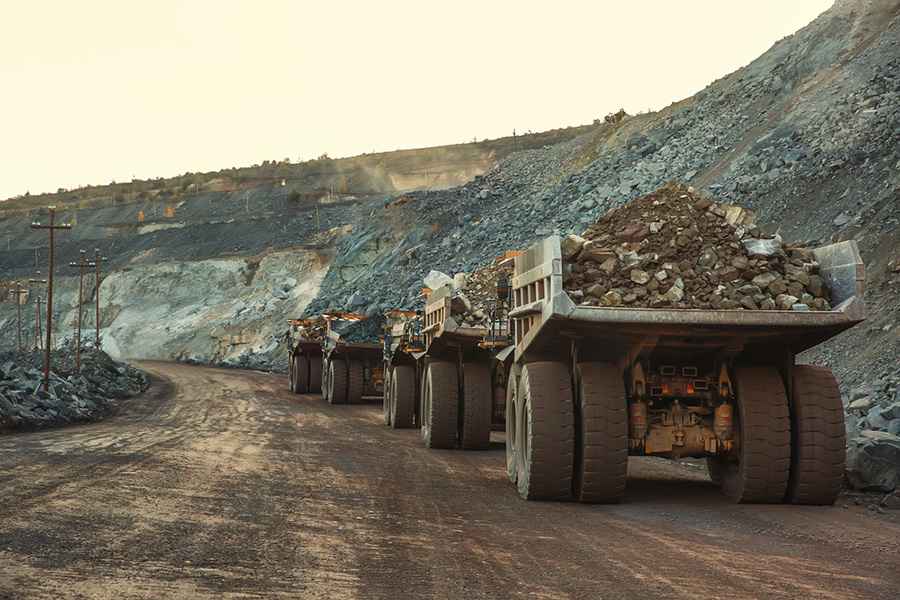Keeping Heavy Vehicles and Mining Equipment in Good Shape: 6 Maintenance Tips
Australia’s mining and heavy industries are built on robust machinery that operates in some of the harshest environments on Earth. From remote desert mine sites to large-scale infrastructure projects, heavy vehicles and mining equipment are constantly exposed to extreme temperatures, dust, vibration, and more. In such challenging conditions, maintaining machinery in good condition is crucial.

When equipment fails, the result is often more than just downtime. It can disrupt project timelines, compromise worker safety, and inflate operational costs. That’s why regular maintenance should never be treated as an afterthought. Rather than waiting for problems to arise, site managers and operators must adopt a proactive approach that combines consistent daily care with scheduled servicing.
To help you get the most out of your fleet, here are practical maintenance tips that every Australian operation should follow to keep heavy vehicles and mining equipment in top working condition.
1. Clean Equipment Regularly
One of the most straightforward yet overlooked maintenance practices is keeping equipment clean. Dust, mud, oil, and debris can quickly accumulate on heavy machinery, especially in Australia’s outback mining zones where red dirt and fine particles infiltrate every crevice. When left uncleaned, this buildup can block filters and overheat components. Moreover, a layer of grime makes inspections more difficult, which may delay the detection of minor faults that could evolve into major failures.
To maintain optimal performance, machinery should be cleaned routinely, ideally at the end of each shift. For larger sites, it’s best to look for trailer pressure washer units for sale, so that the crew can conveniently clean heavy vehicles and equipment on-site. Pressure washing effectively removes hardened mud and debris from undercarriages, joints, and tracks. Moreover, these mobile units are particularly useful in off-grid areas where water access may be limited.
2. Conduct Routine Checks and Inspections
In addition to regular cleaning, daily inspections are essential for identifying issues early and preventing costly breakdowns. A pre-start inspection should be performed at the beginning of each shift by the operator or designated maintenance personnel. This process involves checking for visible damage, loose bolts, cracks, and any warning indicators on the dashboard. Even something as minor as an unusual noise or vibration should be flagged and investigated before the equipment is put into use.
After using the equipment, there should also be a routine check of critical components to see if anything has been damaged. If you want to improve efficiency and consistency, use a standardised checklist so no critical step is overlooked.
3. Follow a Scheduled Maintenance Programme
While daily checks are important, they should be supported by a structured maintenance programme based on manufacturer recommendations and operational conditions. Heavy equipment should be serviced at set intervals determined by usage hours or calendar dates. This typically includes oil changes, filter replacements, brake inspections, fluid flushes, and calibration of critical systems.
Scheduled servicing helps prevent unexpected failures and ensures the machine operates within optimal parameters. It also protects warranties and can increase resale value if properly documented.
4. Monitor Fluids for Quality and Levels
Fluids are the lifeblood of any heavy-duty vehicle or mining machine. They serve as lubricants, coolants, and hydraulic power carriers, yet they’re often compromised by the extreme environmental conditions present in many Australian mining zones. High temperatures and airborne dust, in particular, can degrade fluids quickly, leading to increased friction, overheating, and system failure.
Simply put, regularly checking and topping up engine oil, coolant, transmission fluid, brake fluid, and hydraulic fluid is a non-negotiable in heavy equipment maintenance. Additionally, fluid analysis can reveal contaminants or signs of internal wear before they become serious problems. So, make it a habit to monitor both the levels and the condition (colour, smell, viscosity) of fluids as part of your maintenance routine.
5. Inspect and Maintain Tyres and Tracks
Tyres and tracks carry the weight of heavy equipment and directly impact machine stability and efficiency. On rugged Australian terrain, the risk of punctures, slippage, and uneven wear is significantly higher. That’s why tyre and track inspections should be conducted frequently.
When inspecting tyres, check if they’re properly inflated to the recommended pressure and inspect them for signs of wear, cracking, or embedded objects. For tracked machines such as excavators and dozers, monitor track tension, alignment, and wear on rollers and sprockets. Overly tight tracks can accelerate wear, while loose ones can derail or damage the undercarriage.
6. Store Equipment Properly During Downtime
Proper storage is sadly often overlooked, especially in operations where equipment may be idle between projects or during seasonal shutdowns. However, poor storage practices can lead to battery drain, rust, and system degradation. In Australia’s varying climates, exposure to sun, wind, and rain can also accelerate the deterioration of components, especially rubber seals, hoses, and wiring.
Whenever possible, store machinery under cover or use weatherproof tarps. Always disconnect or isolate batteries to prevent discharge, lubricate exposed moving parts, and block exhausts and intakes to prevent pest entry. It’s also good practice to start the machine periodically during downtime to circulate fluids and prevent mechanical parts from seizing.
When it comes to keeping heavy vehicles and mining equipment in good shape, it’s about preventing breakdowns through consistent, proactive care. Combining simple daily routines with more comprehensive scheduled servicing allows operators to significantly improve safety and extend the working life of their machinery. Whether you're managing a single machine or an entire fleet, making maintenance a priority ensures your operations remain productive and future-ready.
Image credit: Depositphotos